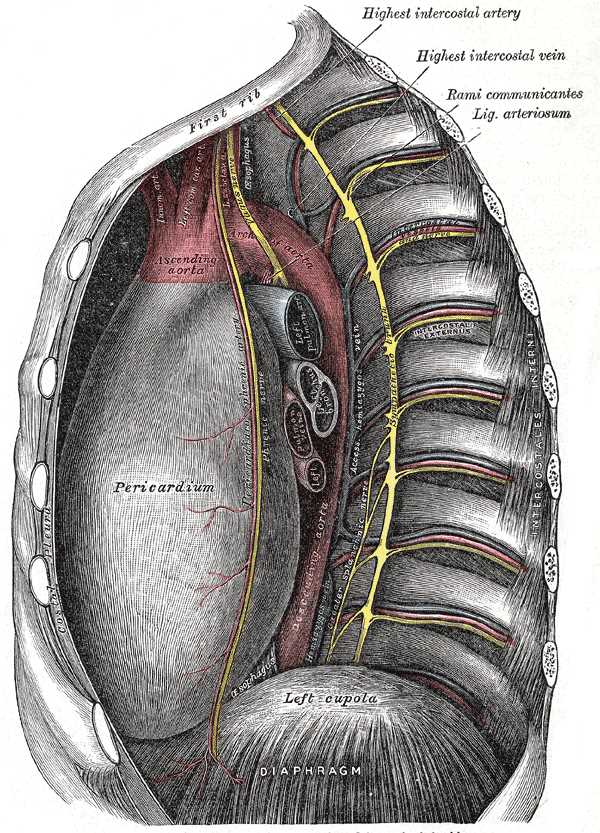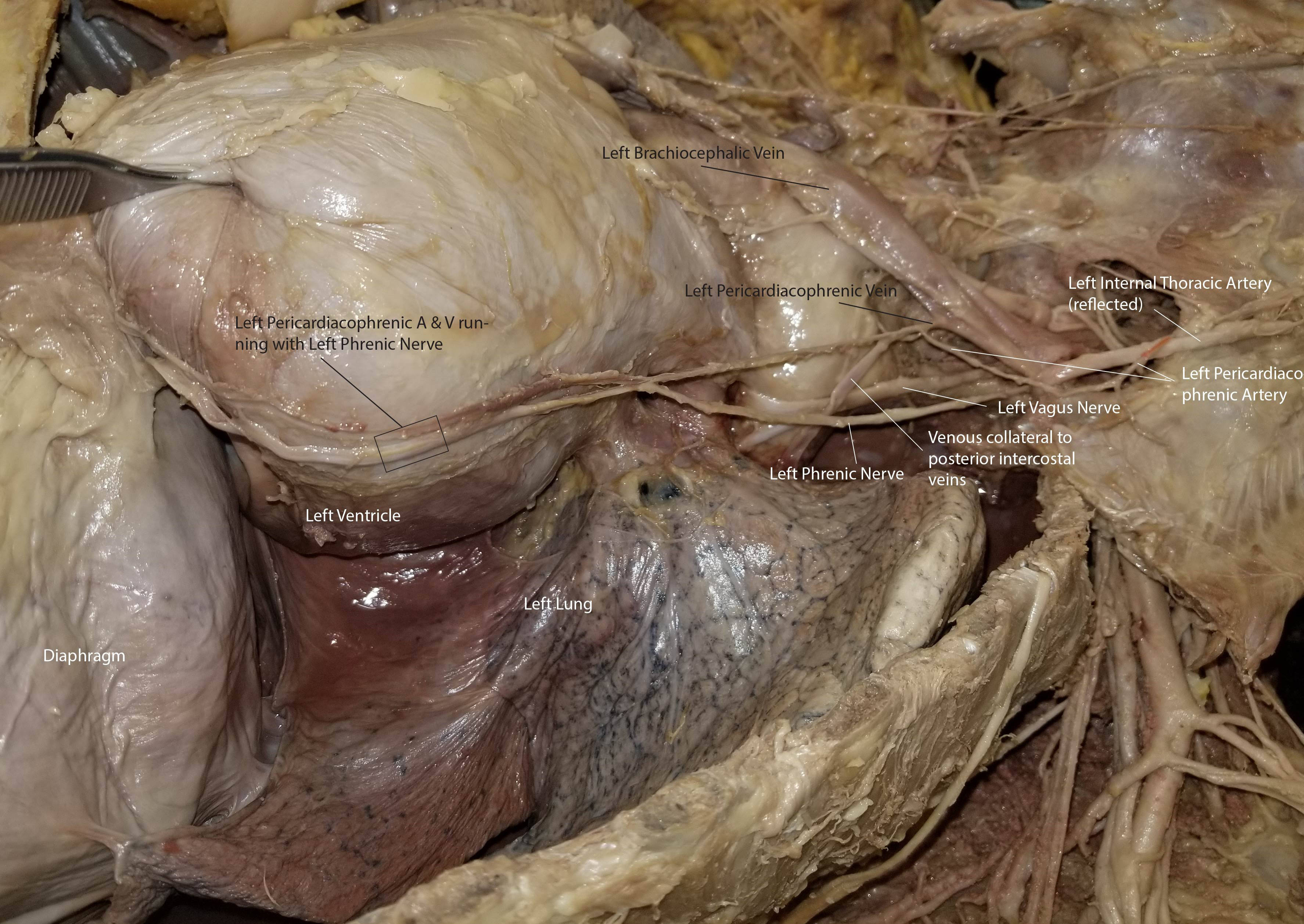Introduction
The pericardiacophrenic artery and vein make up, with the phrenic nerve, the pericardiacophrenic neurovascular bundle. The vessels pass through the superior thoracic aperture into the superior mediastinum and course along the pathway of the phrenic nerve anterior to the lung roots. The vessels are located between the fibrous pericardium and the parietal pleura in the middle mediastinum and extend inferiorly onto the dome of the diaphragm.[1]
The pericardiacophrenic artery supplies blood to the pericardium, diaphragm, and phrenic nerve. While the pericardiacophrenic arteries supply blood to these various tissues, they are also a non-coronary arterial collateral blood supply to the heart.[2][3] Their most important role clinically is to supply the phrenic nerve with blood when harvesting or surgically anastomosing the internal thoracic artery, as in CABG procedures, preserving blood flow in the pericardiacophrenic artery is important to prevent any ischemic damage to the phrenic nerve.
The pericardiacophrenic veins are variable tributaries of the right and left brachiocephalic veins (also formerly known as the innominate veins) or internal thoracic veins. The pericardiacophrenic veins are a minor portocaval anastomosis connecting splenic vein and superior vena cava and can become engorged in portal hypertension. Imaging the pericardiacophrenic veins (or arteries) is a reliable aid in clinical procedures that require locating the phrenic nerve.


